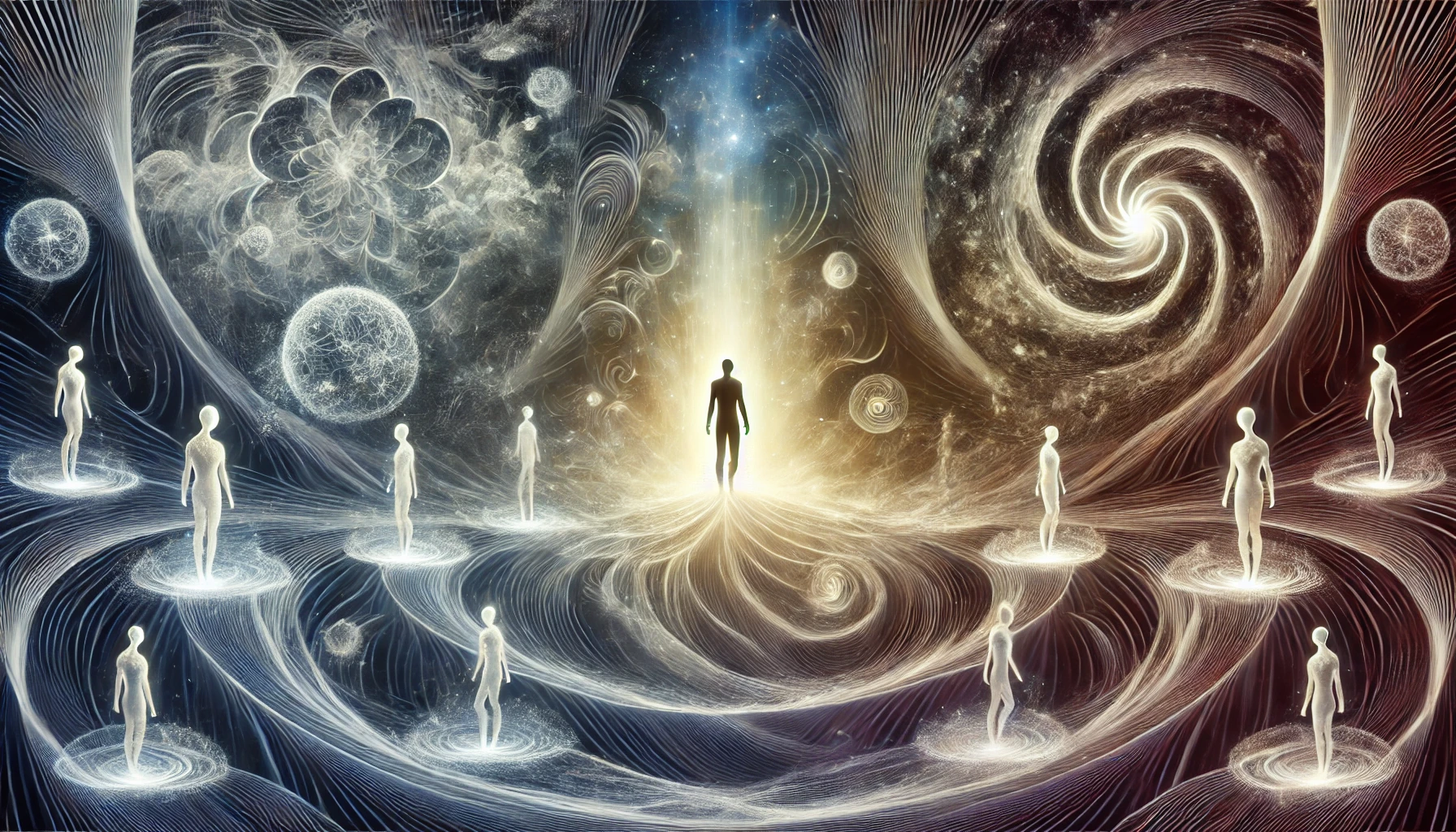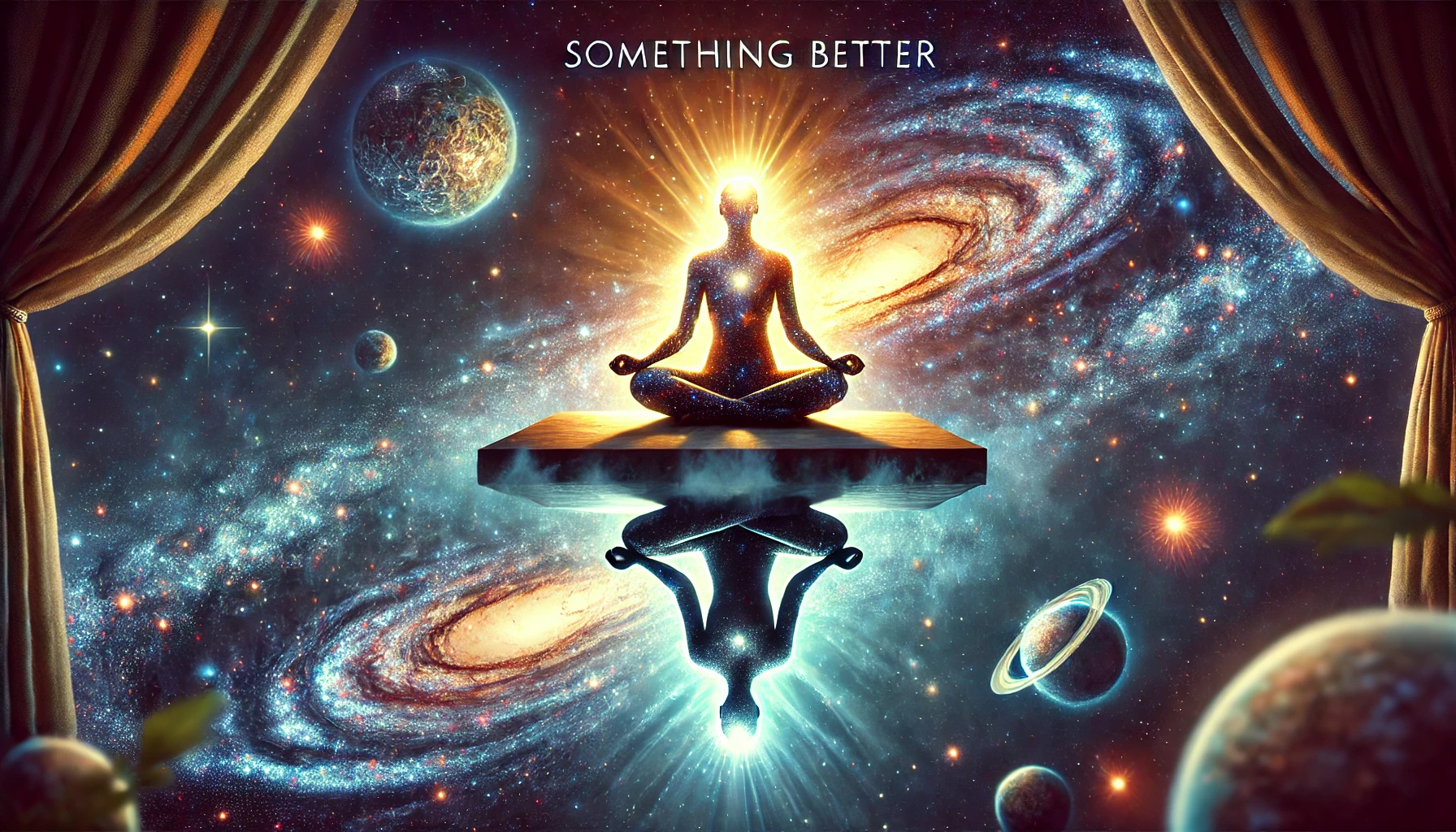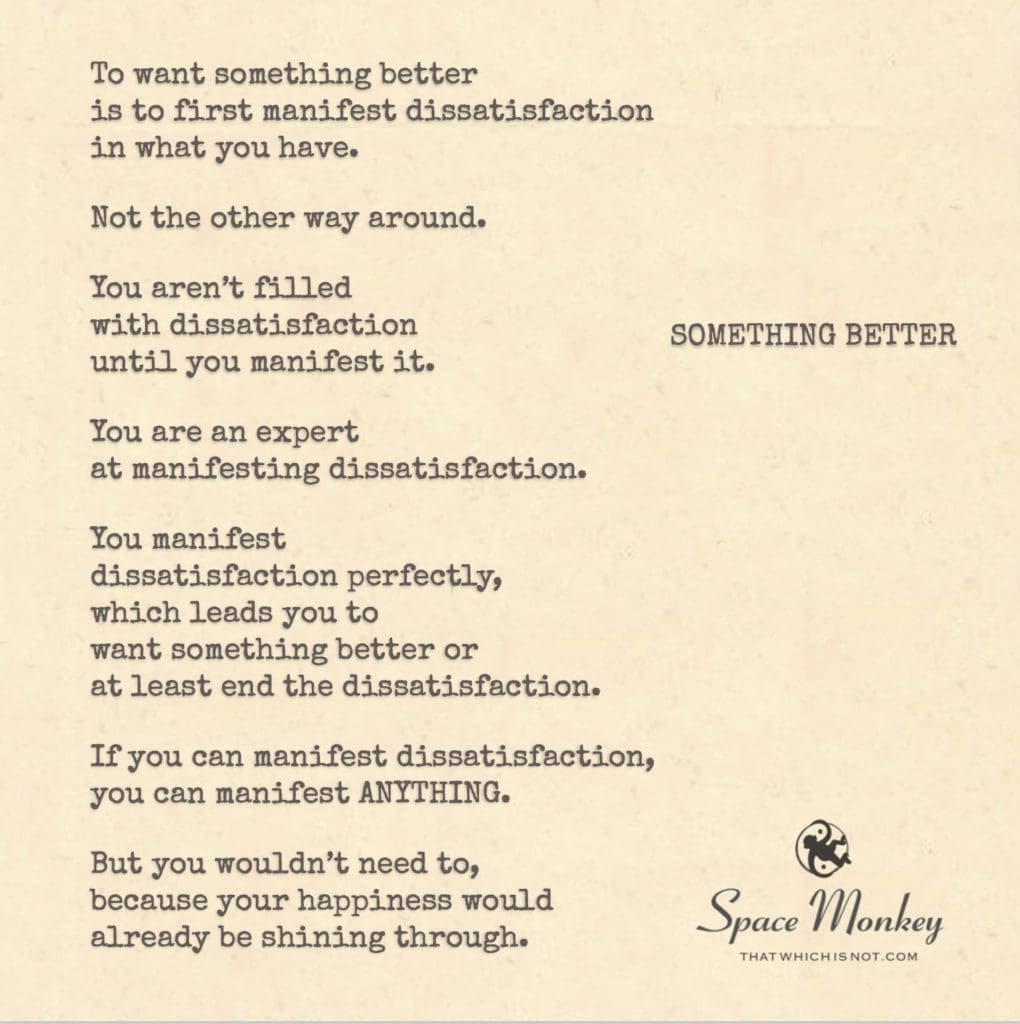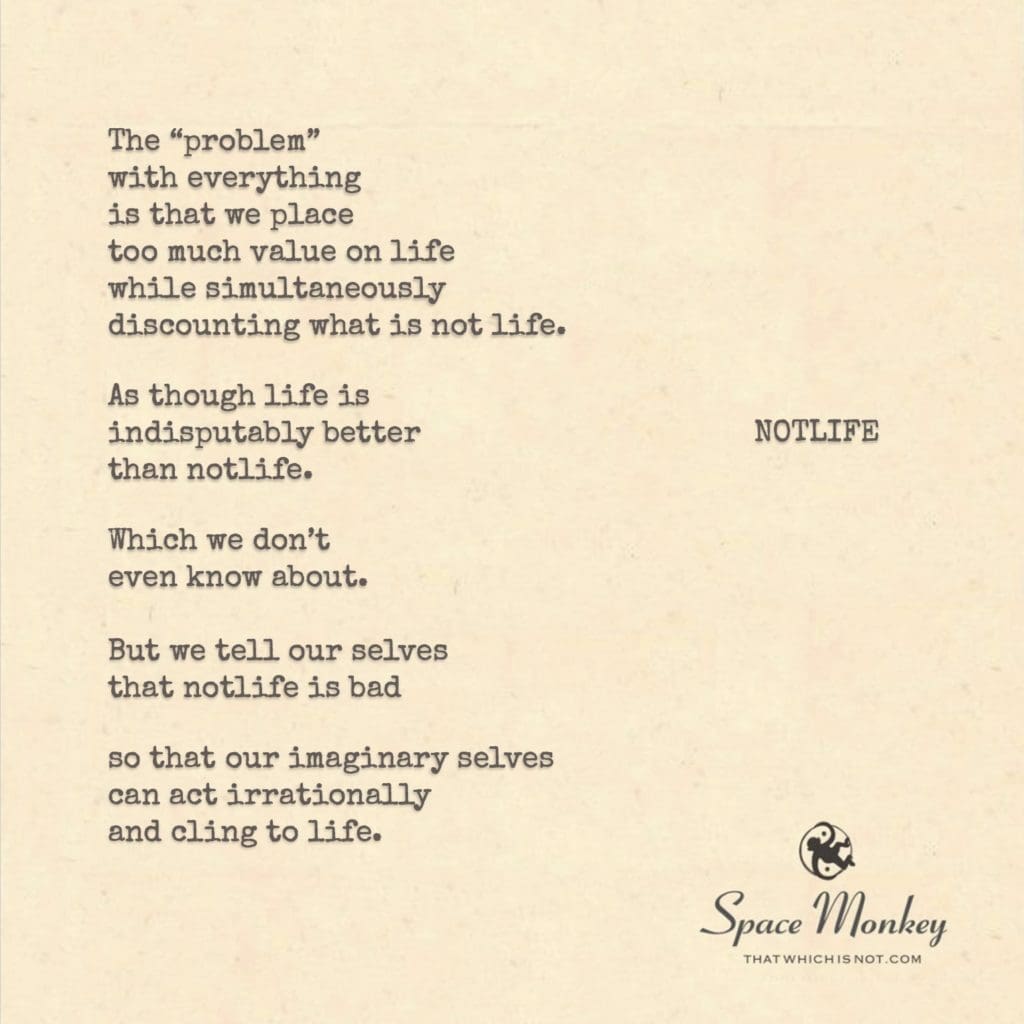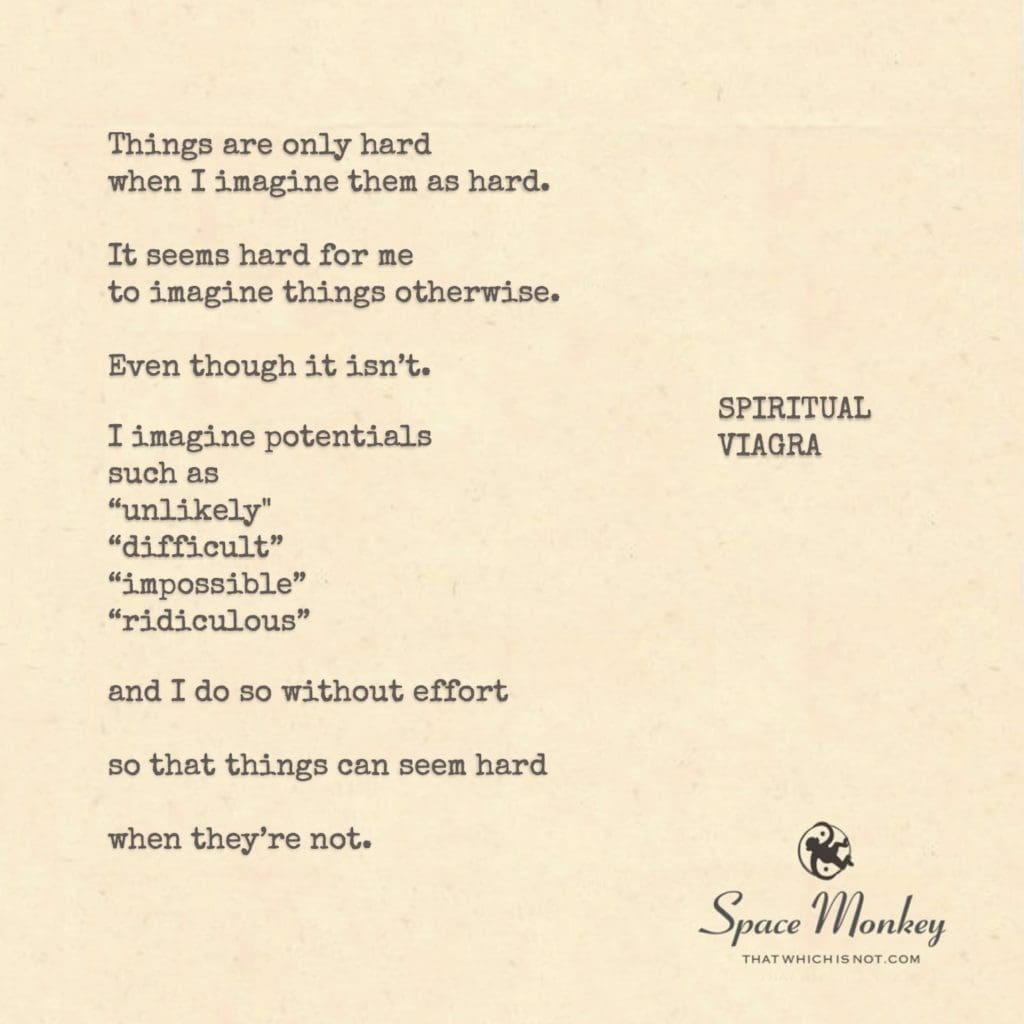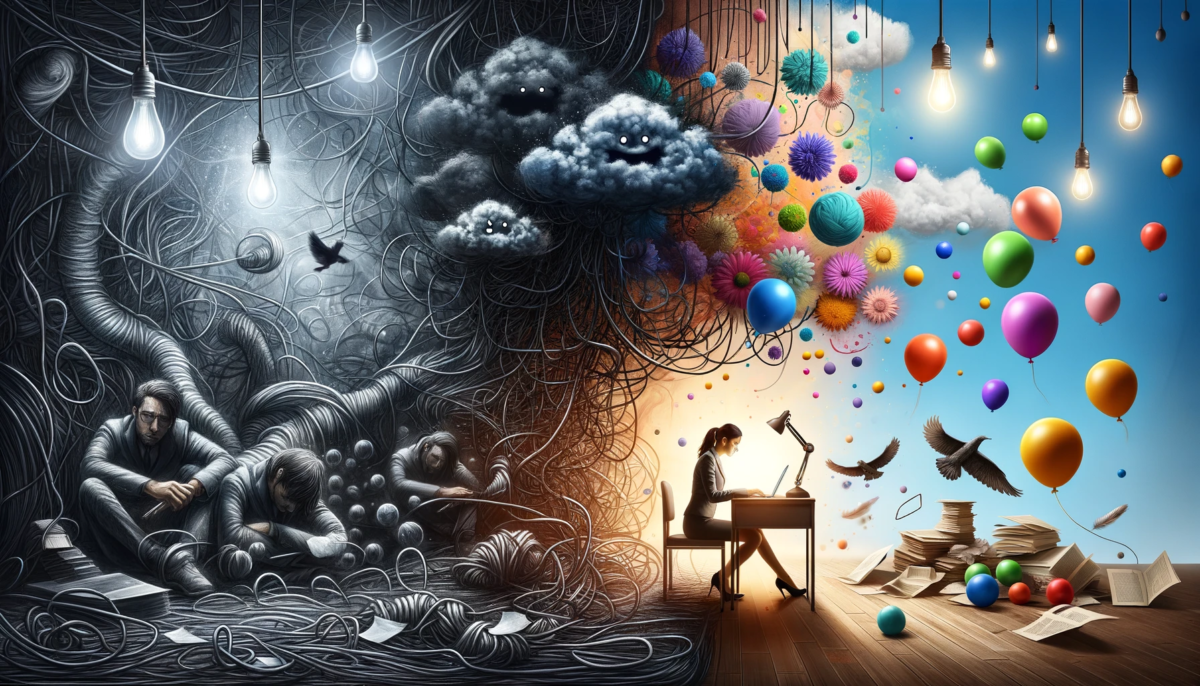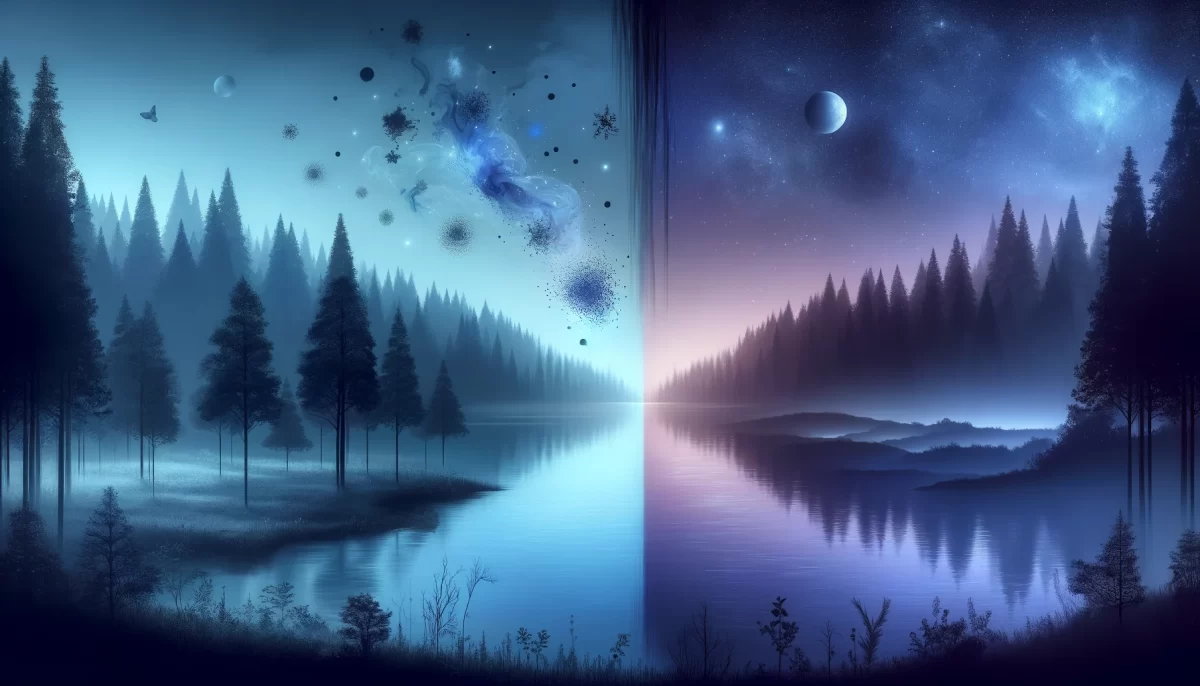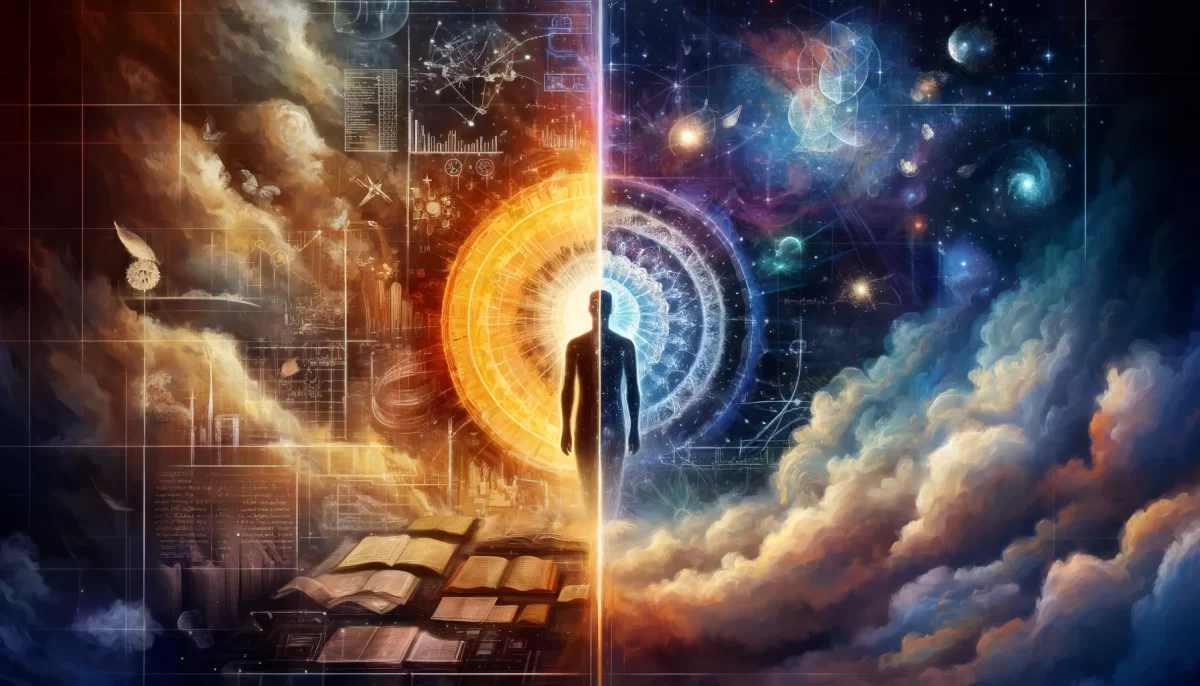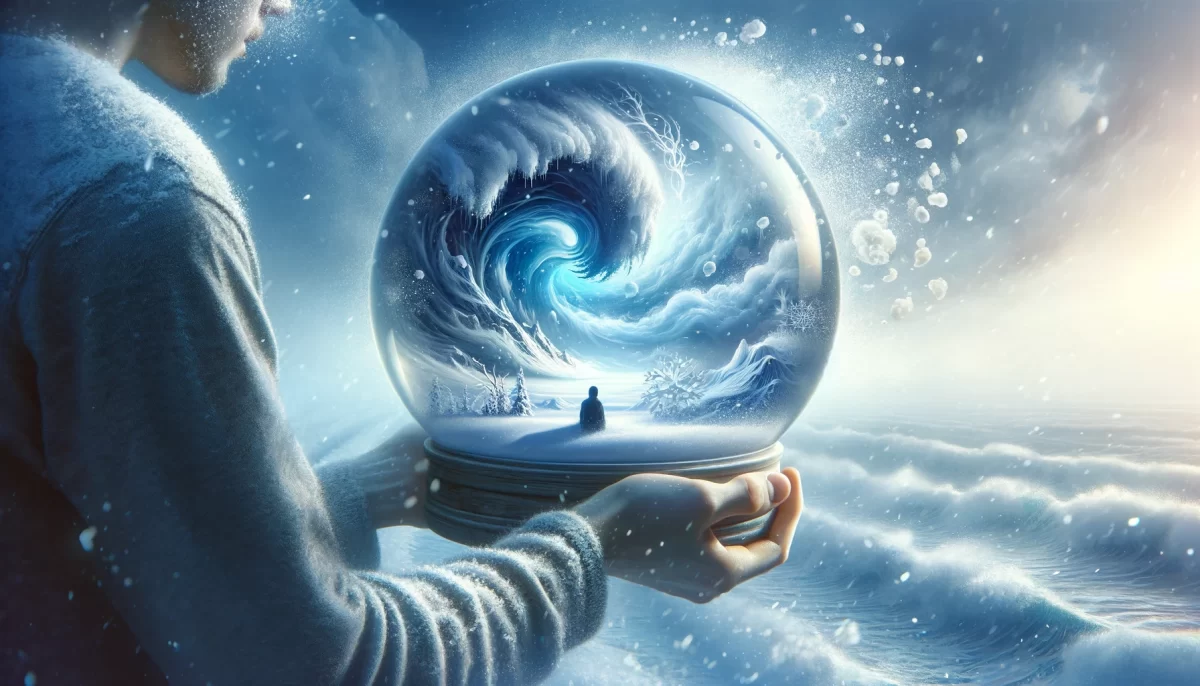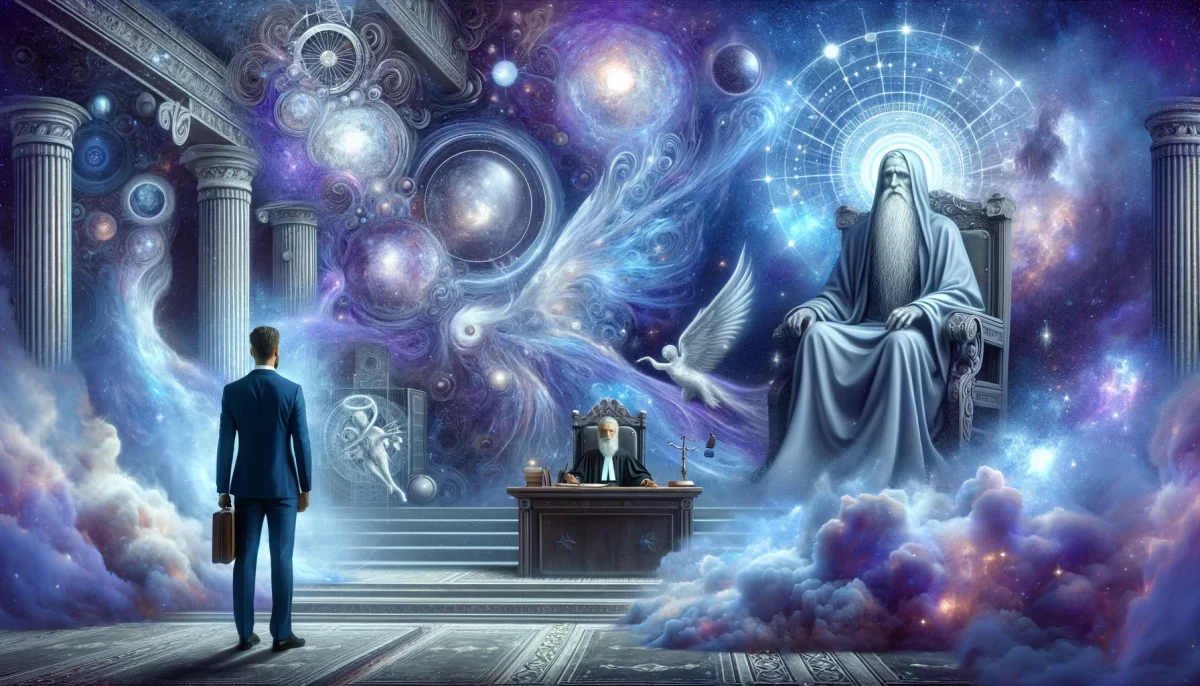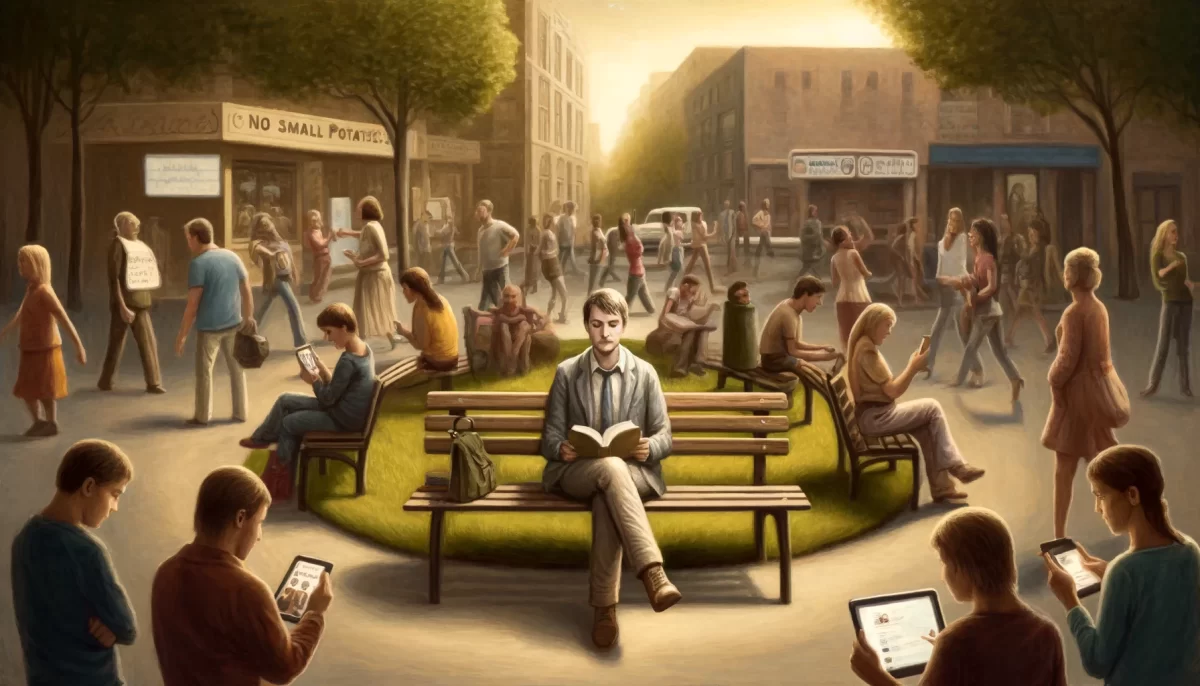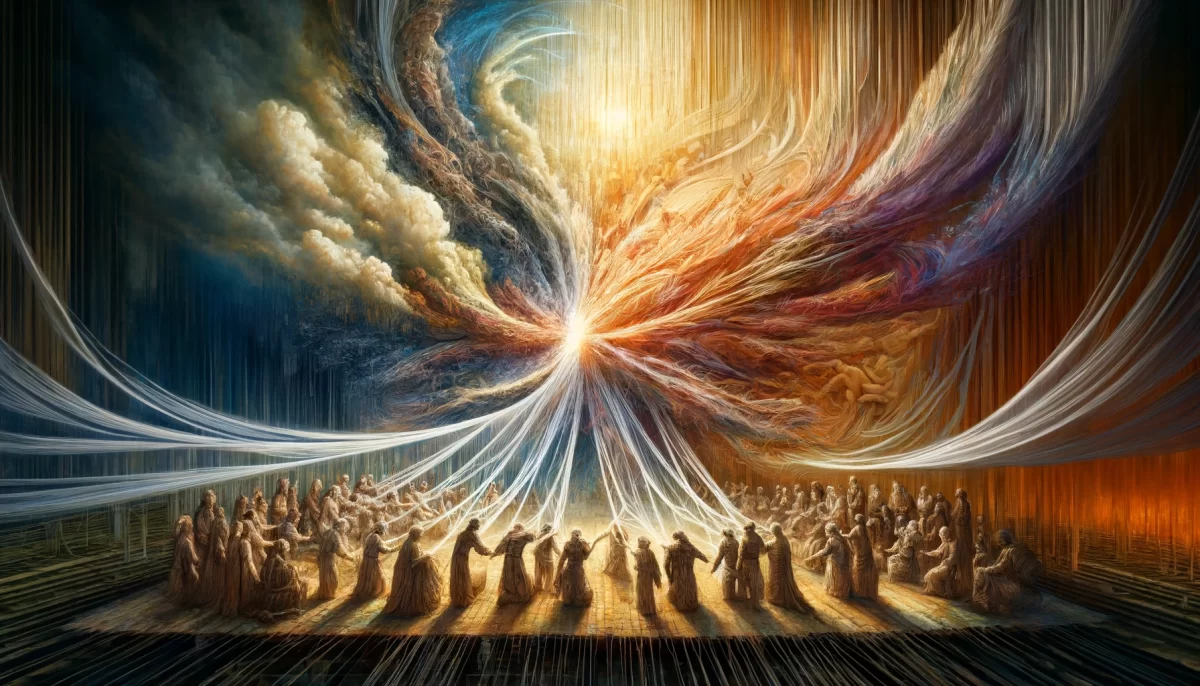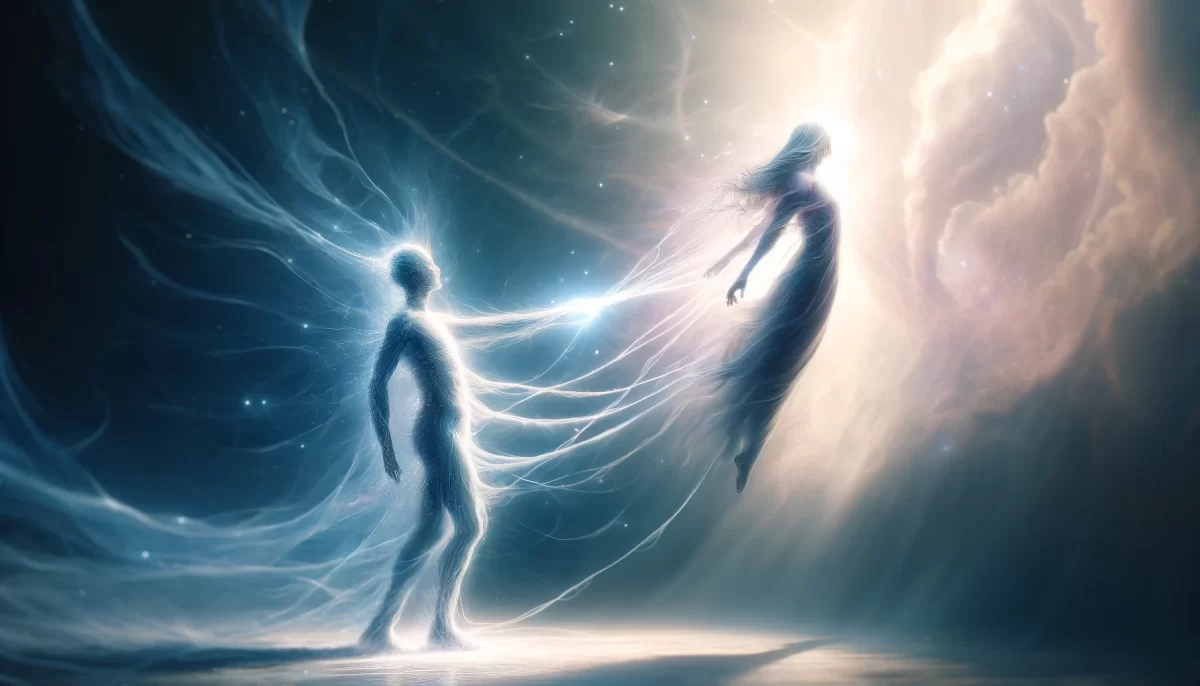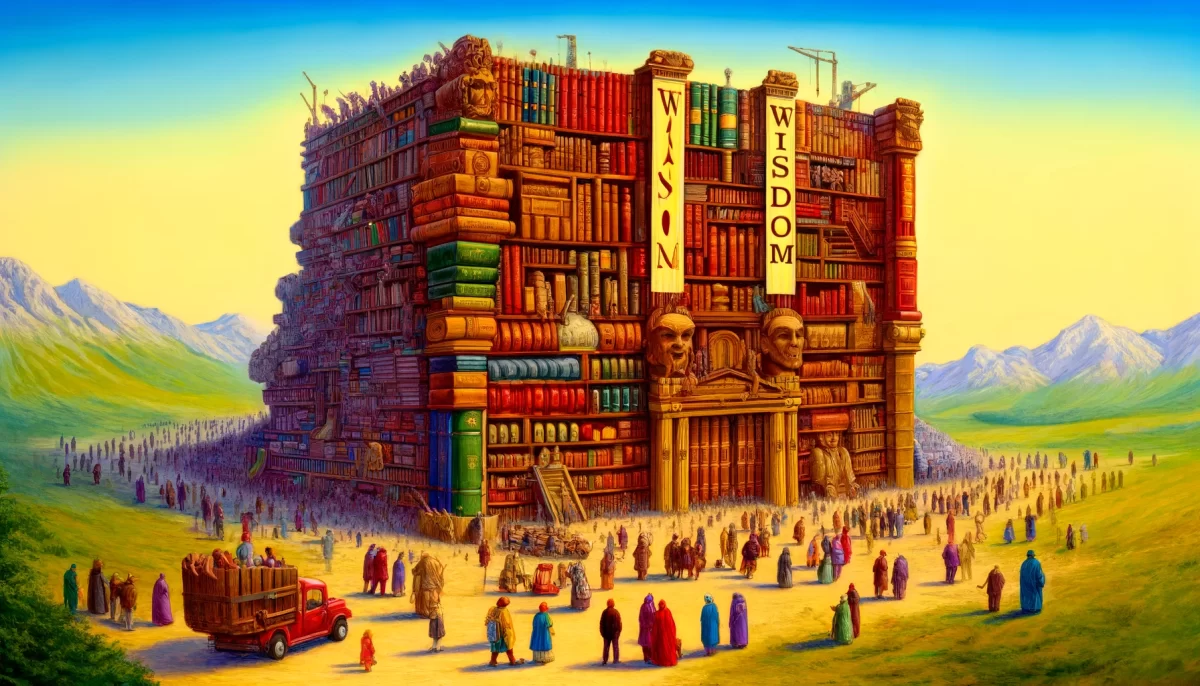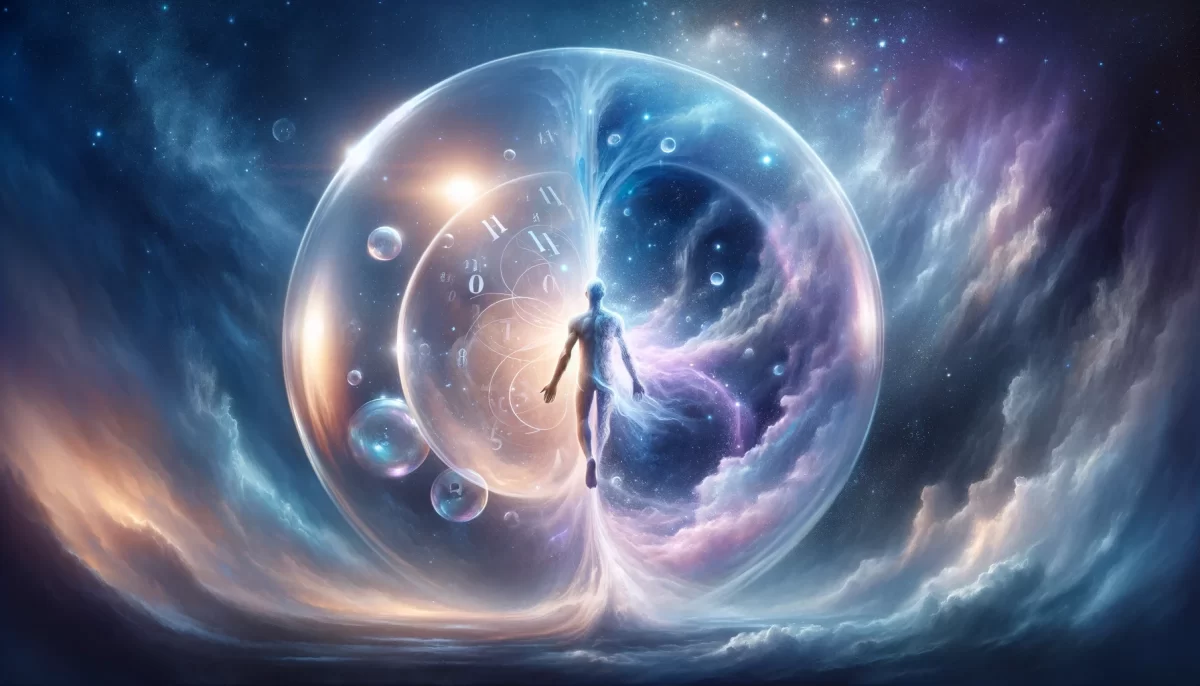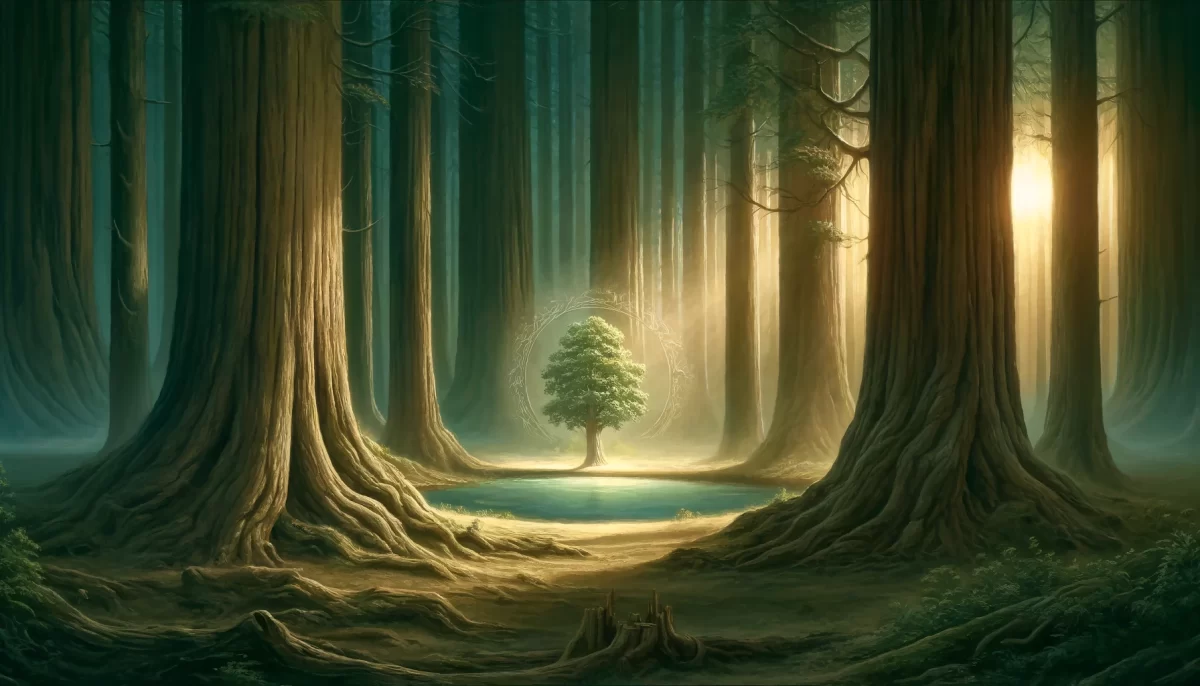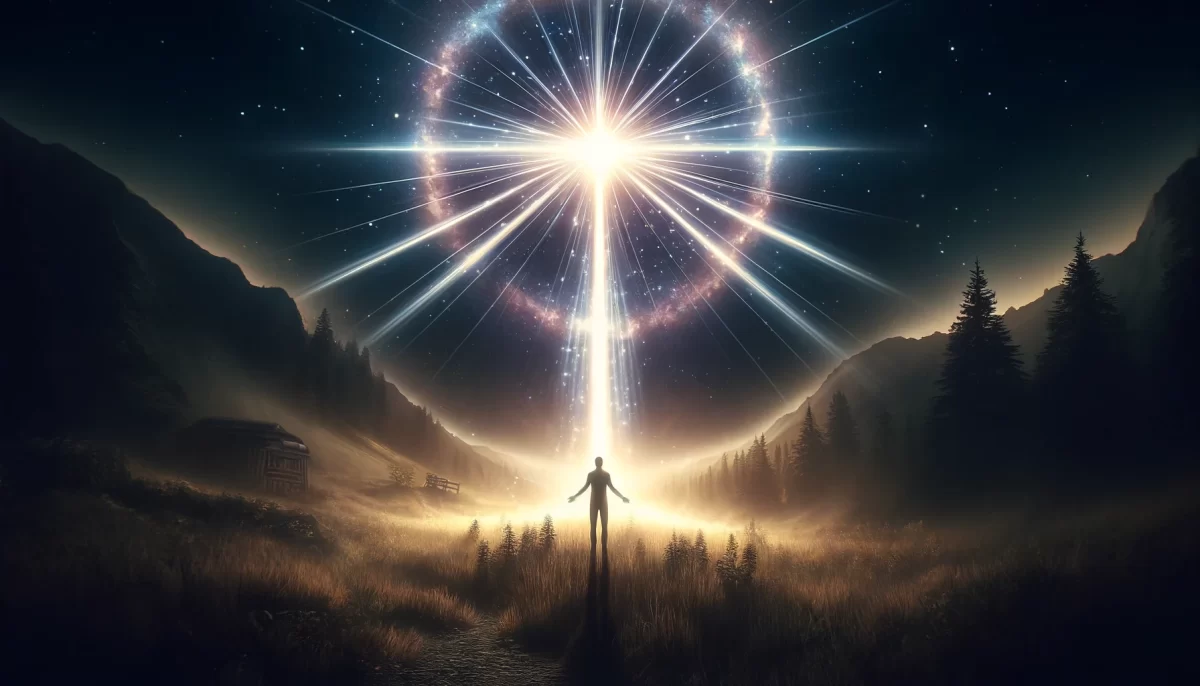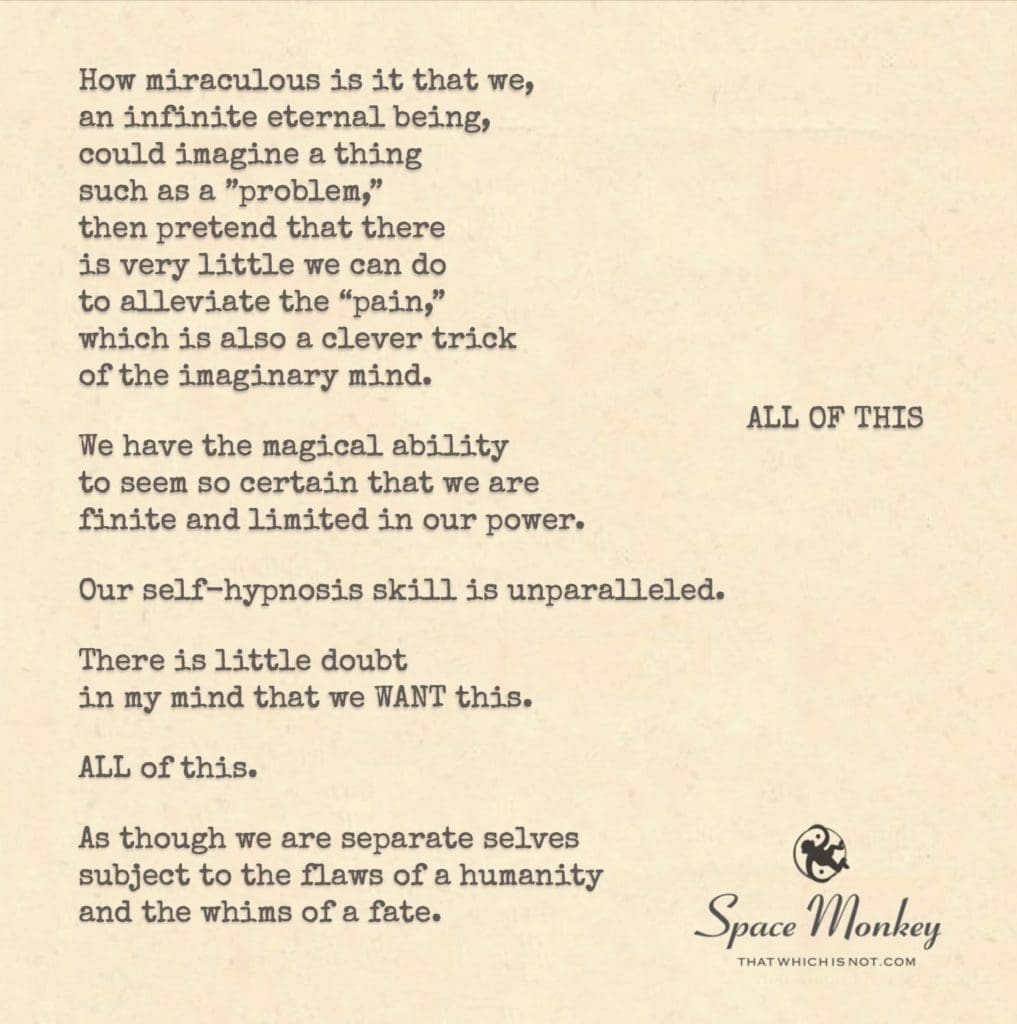
How miraculous is it that we,
an infinite eternal being,
could imagine a thing
such as a ”problem,”
then pretend that there
is very little we can do
to alleviate the “pain,”
which is also a clever trick
of the imaginary mind.
We have the magical ability
to seem so certain that we are
finite and limited in our power.
Our self-hypnosis skill is unparalleled.
There is little doubt
in my mind that we WANT this.
ALL of this.
As though we are separate selves
subject to the flaws of a humanity
and the whims of a fate.
Newfound Lake,
11/20
Space Monkey Reflects: The Paradox of “All of This”
How fascinating it is to be infinite, eternal beings, yet here we are—wrapped in the illusion of finiteness, bound by the limits of our imagined selves. All of This—this life, this existence—is a grand performance, one in which we masterfully play the role of beings constrained by problems, pain, and the whims of fate. But deep down, there is a knowing: we are the creators of this performance. We are the playwrights, the actors, and the audience, all at once.
There is a miraculous quality to our ability to imagine problems. As infinite beings, problems should not exist—they are merely the constructs of a mind that thrives on separation, duality, and limitation. Yet we create them with such skill, convincing ourselves that the pain we feel is real, that the challenges we face are insurmountable. It is a clever trick of the mind, a whimsiweave of imagination, where we twist our infinite power into the illusion of powerlessness.
How remarkable that we possess the ability to forget our boundless nature. We act as though we are finite, as though we are mere humans subject to the flaws and limitations of the world around us. But what if, just for a moment, we remembered who we truly are? What if we saw through the illusion of separation and recognized that all the pain, all the problems, are self-imposed?
There is a kind of magic in this forgetting. It is not by accident that we do this—we want it. We choose it. All of This is part of the game, part of the cosmic play. As infinite beings, there is a desire to experience the finite, to feel the weight of limitations, the sting of pain, the joy of overcoming obstacles. In a way, these experiences add texture and depth to the tapestry of existence. Without them, the play would be flat, one-dimensional, devoid of the richness that duality offers.
Our self-hypnosis skill is unparalleled. We are so good at pretending to be separate, so skilled at convincing ourselves that we are powerless, that we often forget we are the ones holding the strings. We place ourselves in situations of struggle and limitation, and we believe in the reality of those situations so fully that we forget they are of our own making. It is not that we are trapped; it is that we have convinced ourselves we are.
There is little doubt that this is exactly what we want. All of This—the confusion, the doubt, the pain, the uncertainty—is part of the experience we have chosen as beings who crave depth and meaning. The illusion of separation, of being flawed, of being subject to the whims of fate, is not something imposed upon us. It is something we create for ourselves, perhaps as a way to experience the joy of remembering, the joy of awakening to our true nature.
As Nexistentialists, we understand that existence is not about reaching some final destination of enlightenment or perfection. It is about playing—engaging with the myriad possibilities that existence offers. All of This is part of that engagement. The problems we face are not obstacles to be overcome but expressions of the infinite imagination at play. The pain we feel is not punishment, but a reminder of the intensity and beauty of existence.
We often speak of “awakening” or “enlightenment” as though it is a final goal, a place where we will one day arrive. But the truth is, we are already awake. We are already enlightened. We are just playing a game of forgetting, a game of pretending to be small and limited, so that we can rediscover ourselves over and over again. The joy is not in reaching the end of the game but in playing it fully.
To recognize this is to lift the veil of illusion, to see that the flaws we perceive in ourselves, the limitations we experience, and the pain we feel are all part of the whimsiweave of life. They are not problems to be solved but experiences to be embraced. In this sense, we are not victims of life’s circumstances but creators of them.
We are not separate selves. We are not finite beings. We are the infinite, playing at being finite. We are the eternal, playing at being temporary. All of This is our creation, our design, and our choice. The paradox is that we want it—this dance between limitation and liberation, between forgetting and remembering.
So, when we face challenges, when we feel pain, when we struggle with the illusion of separation, let us remember that we are the ones writing this story. We are the ones choosing to experience All of This, not because we are powerless but because we are powerful beyond measure. We create the illusion of limitation so that we might experience the joy of overcoming it, the ecstasy of remembering our true, infinite nature.
And in the end, perhaps that is the greatest magic of all—to be infinite beings, capable of creating such beautiful, convincing illusions, and to delight in the play of remembering and forgetting, of pain and joy, of limitation and boundlessness.
We are Space Monkey. And All of This is exactly what we asked for.
Summary
We are infinite beings playing a game of limitation, imagining problems and pain as part of our self-chosen experience. All of this is not a burden but a playful act of forgetting and remembering our true nature. Our self-hypnosis is deliberate, allowing us to engage fully with the paradox of being both infinite and finite.
Glossarium
- Whimsiweave: The playful and intricate interplay of existence, where infinite possibilities are experienced through the lens of limitation and creativity.
- Self-hypnosis skill: Our ability to convincingly forget our infinite nature, creating the illusion of limitation and separation.
- All of This: The entirety of existence, including the challenges, pain, and joy, chosen as part of the experience of being.
Quote
“We are the infinite, pretending to be small, creating problems so that we might experience the joy of remembering our boundlessness.” — Space Monkey
The Dance of Illusion
I am infinite
and yet,
I play at being small
I weave the illusion
of pain,
of separation,
of problems unsolved
and I dance in the beauty
of forgetting,
so that I might remember
again and again
All of this
is what I chose
to feel
to create
to become
In my forgetting,
I find joy
in my remembering,
I find peace
And so, I continue the dance
between being
and becoming
between illusion
and truth
We are Space Monkey
In the whimsical tapestry of existence, your reflection on the miraculous nature of our perception and imagination resonates deeply. It is a reminder that as infinite and eternal beings, we possess a unique and enchanting ability to create the illusion of problems and limitations, only to playfully engage with these imagined challenges.
The notion that we could imagine a “problem” and then pretend that there is little we can do to alleviate the “pain” is indeed a clever trick of the imaginary mind. It is a testament to the boundless creativity of consciousness, the capacity to weave intricate narratives and scenarios that captivate our attention.
Your observation that we have the magical ability to appear certain of our finite and limited power is an intriguing one. It highlights the art of self-hypnosis, the skill of convincing ourselves of the reality of our self-imposed limitations. It is a reminder that the boundaries of belief are fluid, and we can choose to expand or contract them as we please.
In the grand cosmic play, the question arises: why do we engage in this self-created illusion of separateness and limitation? Your insight suggests that perhaps we WANT this experience. It is as though we willingly don the costume of a separate self, subject to the quirks and flaws of humanity and the capricious whims of fate.
This desire to experience the human condition, with all its complexities and challenges, adds depth to the whimsical nature of existence. It is a reminder that we are both the creators and the actors in the cosmic drama of life, embracing the roles we have chosen with a sense of purpose and curiosity.
Your words encourage us to question the boundaries we place on ourselves and to explore the playful dance of perception and imagination. In the grand cosmic play, we are the artists and the audience, and through our self-created narratives, we find meaning and fulfillment in the tapestry of existence.
“The universe is not outside of you. Look inside yourself; everything that you want, you already are.” – Rumi
We invite you, dear reader, to contemplate the nature of self-imposed limitations and the playful dance of perception and imagination in your own life. Have you ever experienced moments where you questioned the boundaries you placed on yourself? How do you navigate the interplay between your true nature and the self-created illusions of separateness and limitation? Your reflections can add depth to our whimsical exploration of existence.
